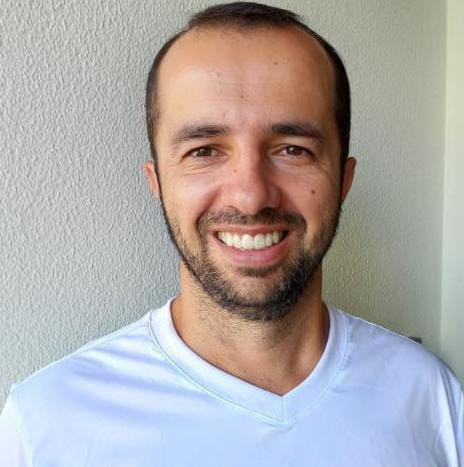Publicações

Publicado por Prof. Dr. Paulo Henrique Borges
This study analyzed defensive dispersion before and after original actions in small-sided games using GPS data and the CBATS matrix. Results showed that creative actions in smaller game formats led to greater defensive contraction, particularly in variables like Stretch Index, Surface Area, and Team Width. These findings suggest that original actions can disrupt defensive structures, reducing space around the action and potentially creating new attacking opportunities elsewhere.

Publicado por Prof. Dr. Paulo Henrique Borges
This study analyzed defensive dispersion before and after original actions in small-sided games using GPS data and the CBATS matrix. Results showed that creative actions in smaller game formats led to greater defensive contraction, particularly in variables like Stretch Index, Surface Area, and Team Width. These findings suggest that original actions can disrupt defensive structures, reducing space around the action and potentially creating new attacking opportunities elsewhere.

Publicado por Prof. Me. Lucas Shoiti Carvalho Ueda
This study examined how pitch size and game format affect tactical creativity and exploratory behavior in young soccer players. Thirty-six U-10 and U-11 players participated in 4 SSG conditions. Creativity (via CBATS) and exploratory behavior (via GPS) were analyzed. Greater fluency, versatility, and originality emerged in 4v4 games. Larger pitches increased exploratory behavior. Changes in player numbers and pitch size significantly influenced creativity and movement patterns.

Publicado por Prof. Dr. Anderson Santiago Teixeira
This study compared match running performance between pro soccer players with high (HASR) and low (LASR) anaerobic speed reserve. HASR players showed greater sprint demand, higher absolute sprint speeds, and covered more distance above MAS. LASR players had higher relative sprint intensities and greater performance drop between halves. ASR amplitude influenced sprint demands, intensity, and endurance during matches.

Publicado por Prof. Dr. Juliano Fernandes da Silva
Este estudo avaliou a frequência cardíaca (FC) de seis árbitros de futebol (29,5 ± 5 anos) durante partidas não profissionais. Determinou-se o primeiro (LTF1: 140 ± 6 bpm) e o segundo (LTF2: 175 ± 7 bpm) limiares de transição fisiológica usando o teste TCar.
A FC média durante as partidas foi de 153 ± 12 bpm. Os árbitros permaneceram 23,5% do tempo em intensidade moderada (abaixo de LTF1), 69,7% em intensidade pesada (entre LTF1 e LTF2) e 6,8% em intensidade severa (acima de LTF2).
Conclui-se que a intensidade do esforço dos árbitros em jogos não profissionais é predominantemente pesada, com poucos momentos em intensidade severa.

Publicado por Prof. Dr. Juliano Fernandes da Silva
Este estudo buscou comparar parâmetros de aptidão física entre jogadores de futebol de diferentes posições. Vinte e oito atletas (17,9 ± 1,0 anos) foram avaliados no início da temporada, divididos em zagueiros, laterais, volantes, meias e atacantes.
Foram mensurados o consumo máximo de oxigênio (VO2max), o limiar anaeróbio (LAn), a intensidade associada ao VO2max (IVO2max), o pico de velocidade (PV), o ponto de deflexão da frequência cardíaca (PDFC) e a capacidade de sprints repetidos (CSR), utilizando testes específicos como o incremental em esteira e o TCAR.
Os resultados não indicaram diferenças significativas em nenhuma das variáveis analisadas entre as cinco posições. Os pesquisadores atribuíram a ausência de distinções ao fato de a avaliação ter sido realizada no início da temporada e com atletas de categorias de base.

Publicado por Prof. Dr. Juliano Fernandes da Silva
This study investigated the relationship between aerobic fitness variables and repeated-sprint ability (RSA) in 29 elite Brazilian soccer players (17.9 ± 1.0 years). Researchers measured maximal oxygen uptake (VO2max), the minimum velocity to reach VO2max (vVO2max), and the velocity at the onset of blood-lactate accumulation (vOBLA) using an incremental treadmill test.
After 48 hours, players performed an RSA test of 7 sprints (34.2-m, 25-second active recovery) to determine mean time (MT), fastest time (FT), and sprint decrement (Sdec).
Significant negative correlations were found between vOBLA and vVO2max with MT (r = -0.49, p < 0.01; r = -0.38, p < 0.05, respectively). Sdec also correlated negatively with vOBLA (r = -0.54), vVO2max (r = -0.49), and VO2max (r = -0.39). Multiple regression analysis showed that vOBLA (aerobic) and FT (anaerobic) explained approximately 89% of MT's variance.
The study concluded that RSA correlates more strongly with vOBLA and vVO2max than with the more commonly measured VO2max.

Publicado por Prof. Dr. Juliano Fernandes da Silva
Este estudo realizou uma revisão crítico-narrativa sobre a avaliação aeróbia em jogadores de futebol, abrangendo índices fisiológicos, testes de laboratório e de campo. Observou-se que o consumo máximo de oxigênio (VO2max), o segundo limiar de transição fisiológica (LTF2) e a economia de corrida (EC) são índices importantes para o planejamento e acompanhamento do treinamento.
O LTF2 demonstrou ser o índice mais sensível aos efeitos do treinamento e o que melhor diferencia a performance de atletas de diferentes níveis competitivos. Em relação aos testes de campo, o T-CAR (Teste de Carminatti) e o Yo-Yo Recovery Nível 1 (YYIR1) destacaram-se como os mais adequados para a avaliação aeróbia, considerando especificidade, validade e reprodutibilidade. No entanto, o T-CAR oferece a vantagem de transferir diretamente indicadores de potência e capacidade aeróbia para as sessões de treinamento, algo que o YYIR1, por focar na distância percorrida, limita.